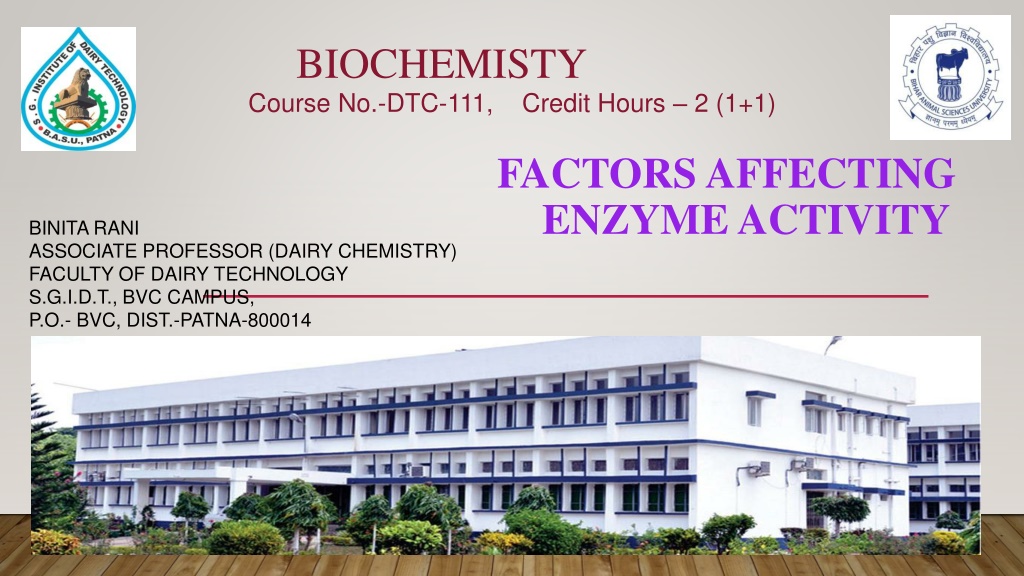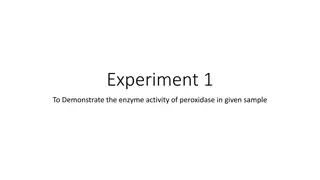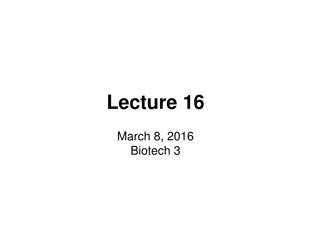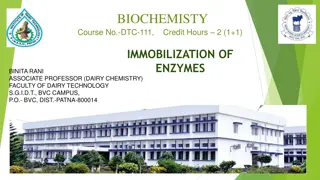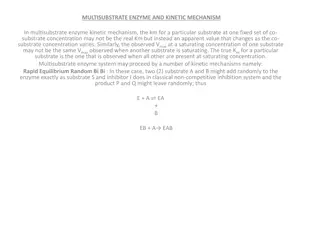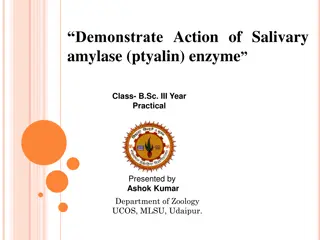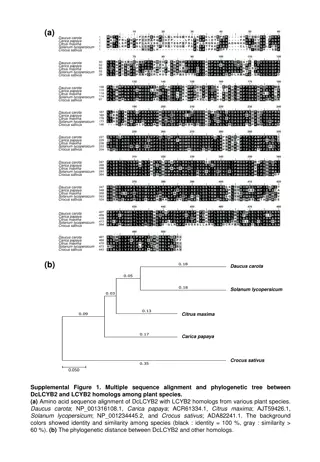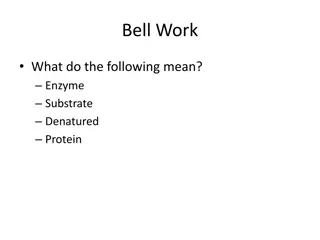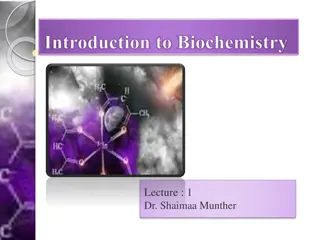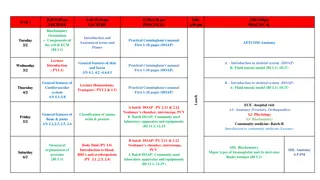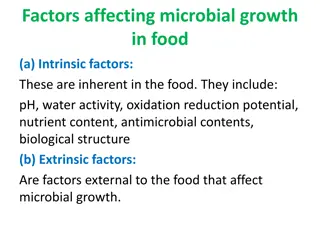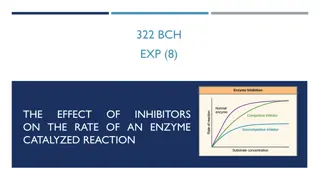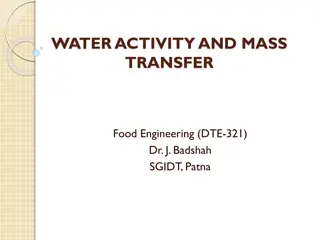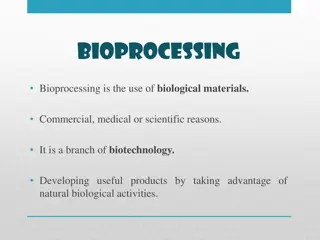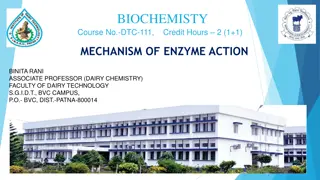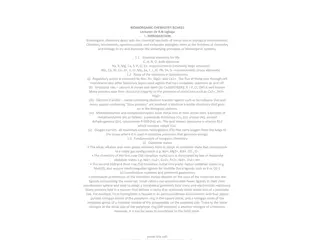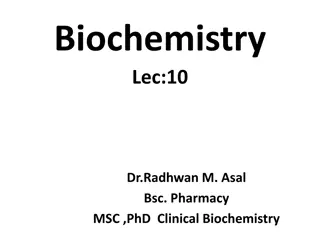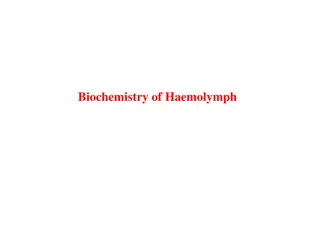Understanding Factors Affecting Enzyme Activity in Biochemistry
Enzyme assays measure substrate conversion to product under varying conditions like cofactors, pH, and temperature. Enzyme velocity represents the rate of a catalyzed reaction, typically reported as V0. Enzyme activity is expressed as mol of substrate transformed per minute, with enzyme unit and katal being standard units. Katal is the SI unit of enzyme activity, defined as the catalytic activity increasing the reaction rate by one mole per second. Substrate concentration impacts enzyme rate, with low concentrations showing a nonlinear relationship with the enzyme rate.
Download Presentation

Please find below an Image/Link to download the presentation.
The content on the website is provided AS IS for your information and personal use only. It may not be sold, licensed, or shared on other websites without obtaining consent from the author. Download presentation by click this link. If you encounter any issues during the download, it is possible that the publisher has removed the file from their server.
E N D
Presentation Transcript
BIOCHEMISTY Course No.-DTC-111, Credit Hours 2 (1+1) FACTORS AFFECTING ENZYME ACTIVITY BINITA RANI ASSOCIATE PROFESSOR (DAIRY CHEMISTRY) FACULTY OF DAIRY TECHNOLOGY S.G.I.D.T., BVC CAMPUS, P.O.- BVC, DIST.-PATNA-800014
An enzyme assay measures => conversion of substrate => product, under conditions of cofactors, pH and temperature at which enzyme is optimally active. An enzyme is most conveniently assayed by: measuring rate of appearance of product or rate of disappearance of substrate. If substrate absorbs light at a specific wavelength => then changes in concentration of these molecules can be measured by => following change of absorbance at this wavelength. Typically this is carried out using spectrophotometer => since absorbance is proportional to the rate of enzyme activity in moles of substrate used (or product formed) per unit time.
Enzyme Velocity Rate of an enzyme catalyzed reaction is => its velocity. It is normally reported as => values at time zero ( V0 ; micromoles /min) since the rate is fastest => at the point where no product is yet present. This is because => substrate concentration is greatest => before any substrate has been transformed to product.
A typical plot of product formed against time for an enzyme catalyzed reaction show => an initial period of rapid product formation which gives => the linear portion of the plot. This is followed by a slowing down of the enzyme rate as substrate is used up during the reaction. Rate of enzyme-catalyzed reaction with time
Enzyme Unit Enzyme activity may be expressed => as mol of substrate transformed per minute ( mol min-1). Standard unit of enzyme activity are => enzyme unit and katal (kat). Enzyme unit is => amount of enzyme => which catalyze the transformation of 1 mol of substrate per minute at 25oC under optimal conditions for that enzyme.
Katal is the SI unit of enzyme activity => defined as => that catalytic activity => which will raise the rate of reaction by one mole per second in a specified system. 1U = 16.67 nanokatal. The term activity refers to => total units of enzyme in the sample, whereas the specific activity is => number of enzyme units per milligram of protein (Units/mg).
Substrate Concentration Normal pattern of dependence of enzyme rate on => substrate concentration (S) is that, at low substrate concentrations a doubling of (S) will lead to => doubling of initial velocity (V0). However, at higher substrate concentration => enzyme becomes saturated, and further increase in (S) leads to => very small changes in V0 called => Vmax. This occurs because => at saturating substrate concentrations effectively => all of the enzyme molecules have bound to substrate. Overall rate is now dependent on => rate at which product can dissociate from the enzyme and adding further substrate will not affect this.
The shape of the resulting graph when V0 is plotted against (S) is called hyperbola curve. Effect of substrate concentration on enzyme-catalyzed reaction
Effect of pH Enzymes have an optimum pH (or pH range) at which => their activity is maximal. At higher or lower pH => activity decreases. Amino acid side chains => in the active site may act as weak acids and bases with critical functions that depend on => their maintaining a certain state of ionization, and => elsewhere in the protein ionized side chains => may play an essential role in the interactions => that maintain protein structure. Large deviations in pH lead to => denaturation of enzyme protein itself => due to interference with many weak noncovalent bonds => maintaining the three - dimensional structure .
A graph of V0 plotted against pH will usually give => a bell - shaped curve. Many enzyme have pH optimum of around 6.8 but => there is a great diversity in pH optima of enzyme due to => different environments in which they are adapted to work. Effect of pH on enzyme-catalyzed reaction
Enzyme Concentration Where the substrate concentration is saturating (i.e all the enzyme molecules are bound to substrate) => doubling the enzyme concentration will lead to => doubling of V0. This gives => a straight-line graph when V0 is plotted against enzyme concentration.
Effect of Temperature Raising temperature => increases the rate of both uncatalyzed and enzyme-catalyzed reactions by => increasing kinetic energy and the collision frequency of => reacting molecules. However, heat energy can also increase => kinetic energy of the enzyme to a point => that exceeds the energy barrier for => disrupting noncovalent interactions that maintain => enzyme s three- dimensional structure. Polypeptide chain then begins to => unfold, or denature, with an accompanying => rapid loss of catalytic activity.
Temperature range over which => an enzyme maintains => stable, catalytically competent conformation depends upon and typically moderately exceeds the normal temperature of the cells => in which it resides. Enzymes from humans generally exhibit stability at => temperatures up to 45 55 C. By contrast, enzymes from the thermophilic microorganisms => reside in volcanic hot springs or undersea hydrothermal vents => may be stable up to or above 100 C.
Isoenzymes Isoenzymes => different forms of an enzyme which => catalyze the same reaction => but exhibit different physical or kinetic properties => such as isoelectric point, pH optimum, substrate affinity or effect of inhibitors. Different isoenzymes forms of a given enzyme are usually derived from => different genes and often occur in => different tissues of body.
Functional lactate dehydrogenase are => homo or hetero tetramers composed of M and H protein subunits => encoded by the LDHA and LDHB genes, respectively: LDH-1 (4H) - in the heart and RBCs LDH-2 (3H1M) - in the reticuloendothelial system LDH-3 (2H2M) - in the lungs LDH-4 (1H3M) - in the kidneys, placenta and pancreas LDH-5 (4M) - in the liver and skeletal muscle
Five isoenzymes that are usually described in the literature => each contain => four subunits. The major isoenzymes of skeletal muscle and liver => M4, has => four muscle (M) subunits; while H4 is the main isoenzymes for heart muscle in most species => containing four heart (H) subunits. Other variants contain => both types of subunits.
